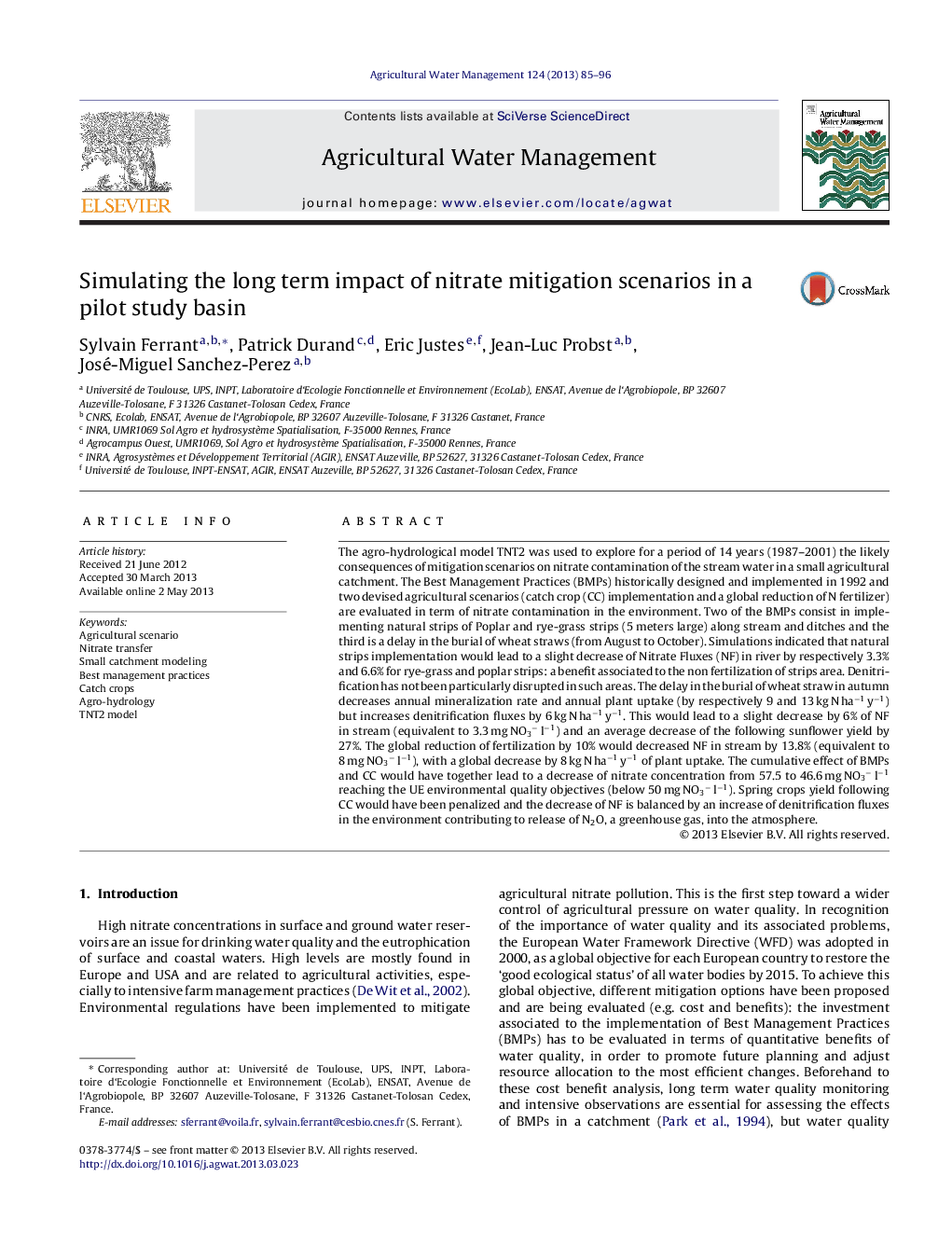| کد مقاله | کد نشریه | سال انتشار | مقاله انگلیسی | نسخه تمام متن |
|---|---|---|---|---|
| 4478806 | 1622955 | 2013 | 12 صفحه PDF | دانلود رایگان |

• Agro-hydrological modeling to quantify agricultural change on nutrient cycle.
• Historical BMPs and natural strips have a low impact on nutrient loss.
• Systematic CC implementation maintain nitrate stream concentration below 50 mg l−1.
• Nutrient loss reduction varies from year to year with CC.
• Nutrient loss reduction is constant in time for natural strips implementation/straw management options.
The agro-hydrological model TNT2 was used to explore for a period of 14 years (1987–2001) the likely consequences of mitigation scenarios on nitrate contamination of the stream water in a small agricultural catchment. The Best Management Practices (BMPs) historically designed and implemented in 1992 and two devised agricultural scenarios (catch crop (CC) implementation and a global reduction of N fertilizer) are evaluated in term of nitrate contamination in the environment. Two of the BMPs consist in implementing natural strips of Poplar and rye-grass strips (5 meters large) along stream and ditches and the third is a delay in the burial of wheat straws (from August to October). Simulations indicated that natural strips implementation would lead to a slight decrease of Nitrate Fluxes (NF) in river by respectively 3.3% and 6.6% for rye-grass and poplar strips: a benefit associated to the non fertilization of strips area. Denitrification has not been particularly disrupted in such areas. The delay in the burial of wheat straw in autumn decreases annual mineralization rate and annual plant uptake (by respectively 9 and 13 kg N ha−1 y−1) but increases denitrification fluxes by 6 kg N ha−1 y−1. This would lead to a slight decrease by 6% of NF in stream (equivalent to 3.3 mg NO3− l−1) and an average decrease of the following sunflower yield by 27%. The global reduction of fertilization by 10% would decreased NF in stream by 13.8% (equivalent to 8 mg NO3− l−1), with a global decrease by 8 kg N ha−1 y−1 of plant uptake. The cumulative effect of BMPs and CC would have together lead to a decrease of nitrate concentration from 57.5 to 46.6 mg NO3− l−1 reaching the UE environmental quality objectives (below 50 mg NO3− l−1). Spring crops yield following CC would have been penalized and the decrease of NF is balanced by an increase of denitrification fluxes in the environment contributing to release of N2O, a greenhouse gas, into the atmosphere.
Journal: Agricultural Water Management - Volume 124, June 2013, Pages 85–96